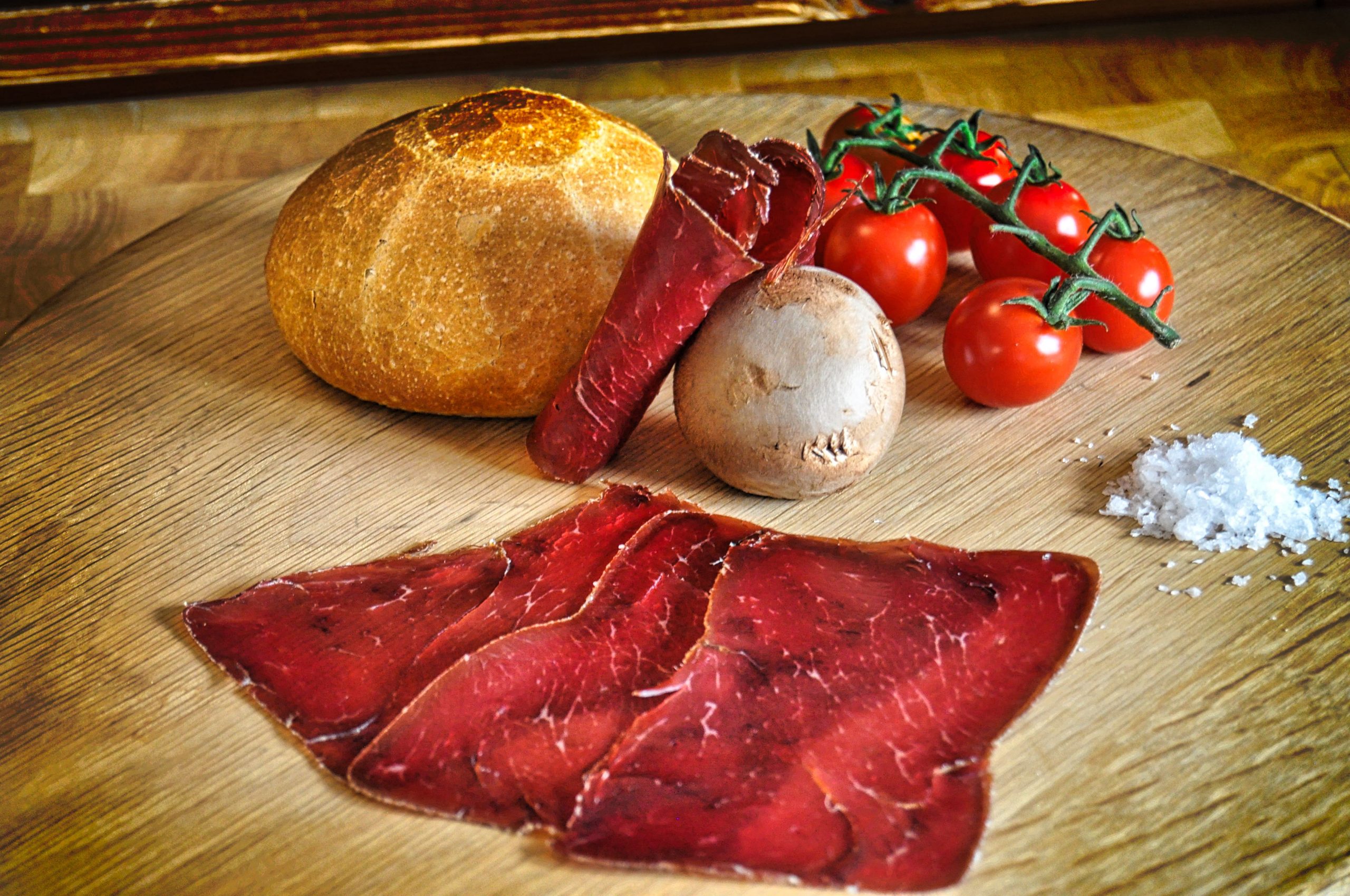There was an extremely diverse walnut flora on earth for over 63 million years. Today, however, most of these species are missing and from a geological point of view, today’s walnut plants are only a remnant of a once rich walnut culture. How did a plant that colonised Europe in a related form 65 million years ago become extinct in Europe in the meantime?
When researching the history of a plant such as the walnut, one must abandon the conventional chronology as used in everyday life. When researching the cultural history of a plant, one does not calculate in hundreds of years, nor in thousands of years, but in millions of years. The history of the walnut can be used to embark on a journey through the different geological eras – Zurich landscape architect and urban ecologist Jonas Frei takes the interested reader on a journey through the different geological eras in his monograph “Die Walnuss. Arten, Botanik, Geschichte, Kultur“ [The Walnut: Species, Botany, History, Culture], published in 2019 and expanded in 2023. To this day, the development of the walnut family has not come to a standstill – the constant change that can be traced over the past millions of years continues unabated.
But the walnut survived.
Ice ages
In the course of the Earth’s history, there have always been ice ages at regular intervals: this process has not changed even today. These regularly occurring ice ages caused many plants accustomed to the warm climate to retreat almost completely from Central Europe. If the distribution area of a plant did not extend into the Mediterranean region at that time, it usually died out completely – according to Jonas Frei, the comparatively small species diversity in Europe today is due to this fact. In the cultural history of the walnut, there was no “caesura” after which the walnut could no longer be found in Central Europe: rather, there was a constant back and forth between ice ages and warm periods, the walnut reclaimed parts of its territory in Central Europe in the meantime, then gave it back again, until about 10,000 years ago (the end of the last ice age) the walnut was eventually completely extinct in Central Europe.
In contrast to the hazelnut, which – in German terminology – gave the Hazel Time its name because of its enormous importance in the diet of Stone Age man, no period of the Stone Age was named after the walnut: After the last known ice age, only North America and Asia still had some descendants of the walnut plant. But the walnut survived.
Reintroduction of the walnut
How did the walnut plants find their way back to Central Europe?
It is assumed, for example, that the evolutionary development of the hazelnut ran parallel to the development of rodents – without rodents, there would have been no animals to spread the hazelnut. However, the situation is different with the walnut: although rodents also play no small role in its spread, the fact that the walnut reclaimed its European distribution area after the end of the last ice age is primarily due to the evolution of another species native to the earth: The evolution of man. Various sources from Roman and Greek times show that the walnut was highly valued in both advanced civilizations. The walnut tree was even part of Greek mythology – the botanical name of the walnut genus of hickories, Carya, even goes back to Greek mythology: Carya was the youngest daughter of the king of the Laconians, with whom Dionysus, the god of wine, fell in love. Dionysus turned her into a walnut tree.
But where did the walnut trees that were cultivated again in Europe during Greek times originally come from? Greek writings refer to the walnut as the “Persian nut” – other theories assume that the conqueror Alexander the Great discovered the walnut in the Middle East and brought it to the Mediterranean region.
One thing is certain: the cultural development of humans played a decisive role in the reintroduction of the walnut in Central Europe.
“Noix de Grenoble”
The walnut also enjoyed a high status in Roman culture: the fossilized remains of walnuts were found in the ruins of the city of Pompeii at the foot of Mount Vesuvius, which was left in a state of solidification by a volcanic eruption in 79 AD due to thick layers of ash.
On the orders of the Franconian Emperor Charlemagne, the walnut tree was replanted on a large scale in the territory of the European empire he initiated: Charlemagne was not only a general, he was also known for his large-scale reforms in the field of agriculture. The enormous spread of walnuts in the territory of the former Frankish Empire can be traced back to one of these reforms – even in today’s France there is still a stronghold of walnut cultivation: in the highly cultural and culinary Périgord region in the southwest of France and around the city of Grenoble, the only walnuts that enjoy the status of a protected designation of origin are grown today.
Large-seeded, selected walnuts are marketed under the name “Noix de Grenoble”. The taste of walnuts from this region is often preferable to other mass-produced products. The area around Grenoble actually has a perfect wine-growing climate: However, due to the spread of phylloxera, walnuts around Grenoble have advanced from a secondary crop to a main crop.
Walnut wood is also used in the construction of instruments.
Diverse uses of the walnut plant
Jonas Frei’s monograph on the walnut is divided into two main parts: In the first part, the reader is informed in detail about the historical origins of walnut plants, how walnuts are used and the systematics underlying the different walnut varieties. The second part of the monograph is packed with species portraits of all the varieties of walnut plants found on earth: Each individual variety is described in detail and illustrated with pictures. This makes Frei’s walnut book a work that is also understandable for laymen, providing an overview of the cultural history of the walnut, but at the same time an encyclopaedia for the trained botanist.
The products of walnut plants are used in many different ways: In addition to the kernel of the walnut fruit, which is edible and can also be used for baking, the wood of the walnut tree is also of great importance in furniture making. Walnut wood is also frequently used in the construction of instruments – in terms of quality and durability, this precious wood can compete with some tropical woods that are used in mass production for furniture. Compared to tropical wood, walnut has lost some of its importance in recent decades, but is often used for luxurious inlays and burl veneers.
The walnut – survivor of the ice age
From North America to Europe and Asia: the walnut plant can be found on all three continents and is prized in both European and Asian cultures. In his walnut monograph, Jonas Frei puts the amount of walnut production worldwide at around 383,000,000 tons – far more than a few decades ago: The walnut enjoys unbroken popularity worldwide and is an integral part of the landscape in Central Europe.
The walnut is a plant that is millions of years old and was native to Europe for a long time. After the end of the last ice age, the walnut – like many other plants and trees – died out and was probably reintroduced to Europe from Asia with the emergence of the first European civilizations. The walnut is therefore one of the plants that has survived several million years of Earth’s history and is still thriving today. Humans will probably never know about many plants that existed millions of years ago and no longer exist today.
A few decades ago, it was suggested that the earth is currently on the brink of a new ice age – one might wonder whether the walnut plant will survive the next ice age…
The following work served as main source:
Frei, Jonas: Die Walnuss. Arten, Botanik, Geschichte, Kultur [The Walnut. Species, Botany, History, Culture]. 2023 AT Verlag.
Der Bussard expresses its gratitude to AT Verlag for their cooperation. Jonas Frei’s work was kindly provided to Der Bussard.
Published in 2019, the standard work by Jonas Frei, landscape architect and urban ecologist from Zurich, offers a comprehensive overview of the species, botany, history and culture of the walnut.
Cover: © at-verlag.ch

Cover picture: © Simon von Ludwig

 Deutsch
Deutsch








